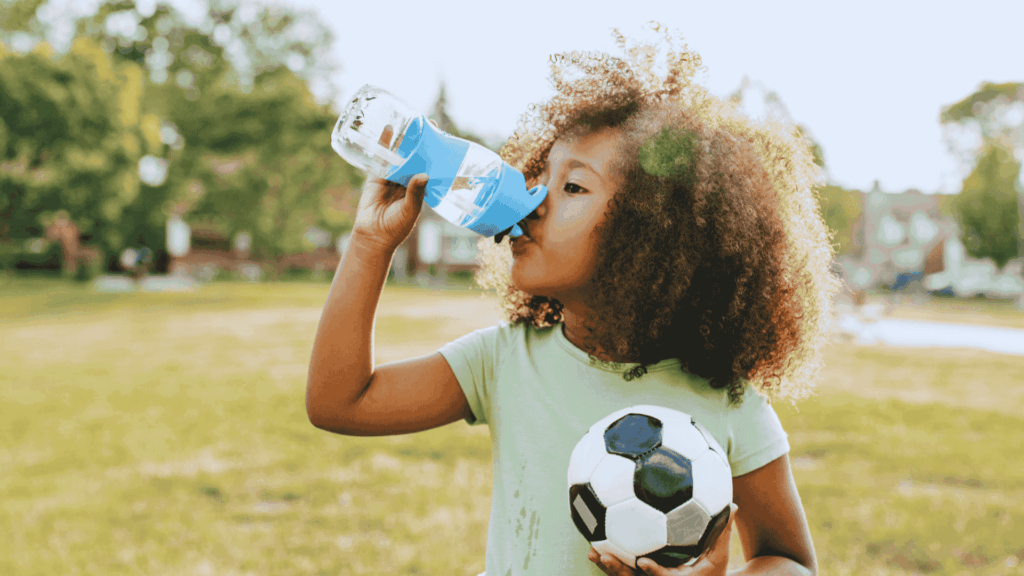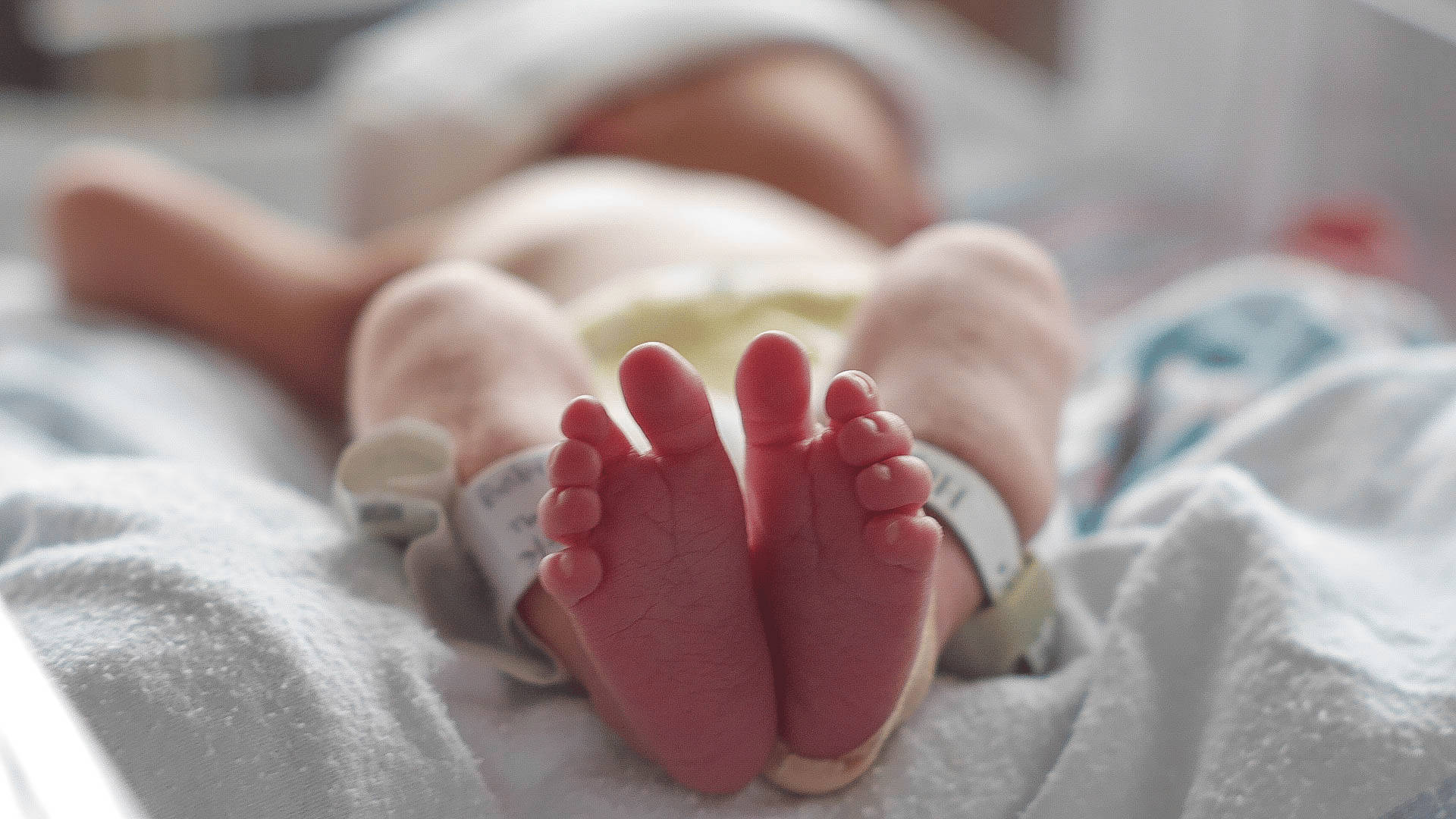Once temperatures rise and sunshine prevails, children are particularly susceptible to dehydration and heat exhaustion.
The combination of elevated temperatures, extended outdoor playtime and adventures, and increased sweating means their bodies lose more water than usual.
Summer Safety Tip: Pay Attention to Signs of Dehydration in Children
Ensuring your children are adequately hydrated is best, but recognizing initial signs of dehydration, as well as heat exhaustion or heatstroke, gives you the chance to take immediate action.
Step One: Preventing dehydration in 3 simple steps
You can help prevent dehydration in children by taking these three simple steps.
1. Take hydration breaks every 30 to 60 minutes
Set a timer on your phone or watch every 30 minutes (for smaller children) and 60 minutes for children 7 years old or older. When the timer goes off, it’s time to find some shade or come inside for a hydration break. In addition to providing direct hydration through their sips of water, it also serves as a chance for their bodies to cool down and stop sweating (don’t forget to reapply sunscreen!).
Make water the mainstay of your hydration breaks, and you can have fun adding things like wedges of citrus fruit, berries, or cucumber slices to give it some flavor without extra sugar. Let your kids experiment to find their favorite combinations, and then keep a pitcher in the fridge – or in a water cooler on an outdoor table.
Fun Tip: Up the ante by offering hydrating snacks and lunches, too. Things like watermelon and other types of melon, orange slices, apples, grapes, lettuce, etc., act as time-release hydration “supplements” because the water is released and absorbed through digestion.
2. Avoid peak sun hours
When possible, try to avoid the sun’s peak hours when outdoor temperatures are highest. Playing outside in the morning, late afternoon, and evening helps to prevent overheating. Use peak mid-day hours for indoor or patio lunching and nap or rest time.
3. Take advantage of the shade
As we referenced above, pair hydration breaks with a break from direct sunshine by resting in the shade. This prevents dehydration and provides a cooling rest to keep the body’s core temperature in the normal range. If you’re visiting one of Portland’s beautiful parks or waterside recreation areas, be sure to bring a shade tent, umbrellas, or a canopy in case the existing shade is already taken.
Common Signs of Dehydration in Kids
Even with the best of intentions, active kiddos can wind up becoming dehydrated before you know it. If your children are old enough, teach them about the importance of hydration, the signs of dehydration, and heat-related illnesses. They may recognize the signs in themselves or their friends, which can ensure it’s reversed sooner than waiting for an adult to notice.
Some of the common and early signs of dehydration include:
- Dry lips and tongue.
- Dry or wrinkled skin.
- Unusual sleepiness or fatigue.
- Crying without tears
- Sunken eyes.
- Muscle cramps (try using an electrolyte drink, such as Pedialyte or coconut water, if this occurs).
- Irritability.
- The soft spot on an infant’s head may look sunken.
- Cold but blotchy hands and feet (not to be confused with the same look caused by cold river or lake water).
- Flushed, red skin.
- Not urinating (hydrated babies should have at least six wet diapers per day; hydrated children should go to the bathroom at least once every four hours or so).
If you are in the process of weaning your baby, be sure to offer the bottle more frequently than usual. When you’re breastfeeding, your body is very in sync with the baby’s hydration needs, and you may even let down or have the urge to feed before the baby gives you a cue. Once they’re weaned, it’s a good idea to offer water or formula more often.
More serious signs of dehydration are also the beginning signs of heat exhaustion.
Those include:
- Dark colored urine (hydrated urine should be very light yellow to nearly clear)
- Headaches.
- Dizziness.
- Confusion.
- Heat intolerance or chills (despite the warm/hot temperature).
- Nausea.
- Being pale or clammy.
- Rapid heart rate and/or rapid, shallow breathing.
- Lack of appetite (may also be craving sugar).
- Elevated body temperature
If your child experiences symptoms that indicate severe dehydration or heat exhaustion, take immediate action.
- Start by getting them into a cooler place and having them take slow, consistent sips of water.
- Have them lie down with their feet elevated.
- See if they will eat some cold watermelon, fresh fruit, etc., or a 100% fruit-juice popsicle.
- Use a fan, cool compresses (wet towels are great for this), or a lukewarm (not cold) bath to lower their core temperature.
- Read a story for a calm activity that gives their body time to cool down and rest.
If these steps don’t work or the child seems worse (rather than better), call to speak to one of our triage nurses and schedule an urgent care appointment so we can assess the situation and decide the next best steps.
The PANW 24-Hour Nurse Advice Line Is Here For You All Summer Long
The good news is that by preventing dehydration and balancing summer fun in the sun and shade, odds are you’ll never have to worry about heat-related illness.
When in doubt, we always encourage patient families and caregivers to use our 24-hour nurse advice line so our nurses can listen to your concerns, offer recommendations and/or advise that an urgent care visit is need. With PANW’s urgent care appointments offered 365 days a year, your family will always be cared for.





